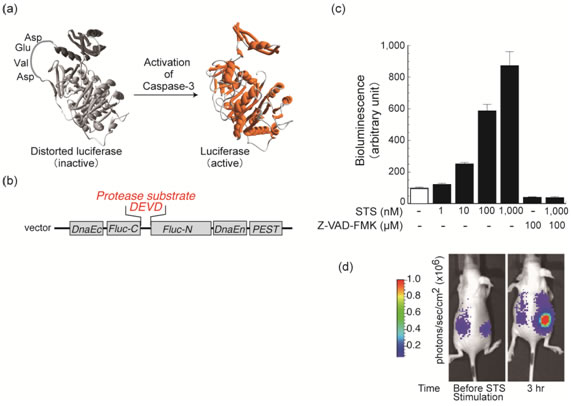We developed a bioluminescent indicator for high-throughput sensing and noninvasive real-time imaging of caspase activities in living cells and animals. Firefly luciferase connected with a substrate sequence of caspase-3 (Asp-Glu-Val-Asp) is cyclized by an intein DnaE (a catalytic subunit of DNA polymerase III). When the cyclic luciferase is expressed in living cells, the luciferase activity greatly decreases due to a steric effect. If caspase-3 is activated in the cells, it cleaves the substrate sequence embedded in the cyclic luciferase and the luciferase activity is restored. We demonstrated quantitative sensing of caspase-3 activities in living cells upon extracellular stimuli. Furthermore, the indicator enabled noninvasive imaging of the time-dependent caspase-3 activities in living mice. Although we demonstrate the usefulness of the present indicator showing caspase-3 activation, it should be emphasized that the present cyclic luciferase using the protein splicing can be applied to any proteases. With this basic concept, a rapid screening system and a noninvasive imaging technique can be developed for understanding the mechanism of proteolysis and discovering novel chemical compounds modulating protease activities.
A. Kanno, Y. Yamanaka, H. Hirano, Y. Umezawa, T. Ozawa, Cyclic Luciferase for Real-Time Sensing of Caspase-3 Activities in Living Mammals. Angew. Chem. Int. Ed. 46, 7595–7599 (2007).DOI:10.1002/anie.200700538

